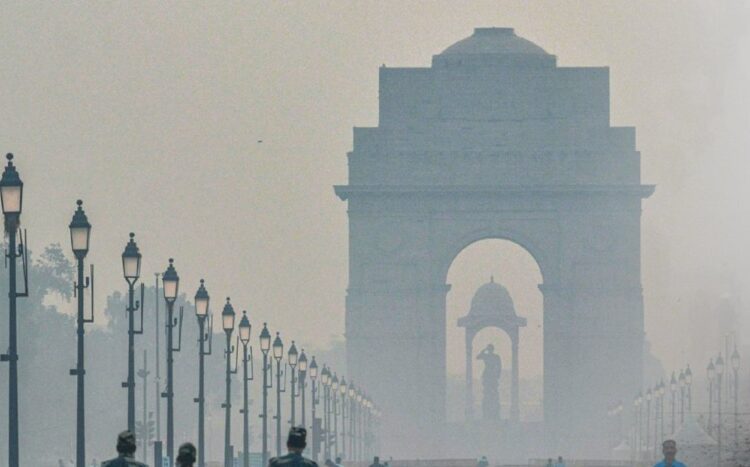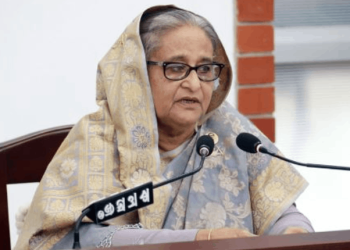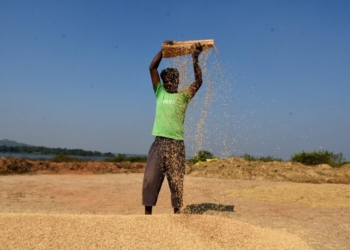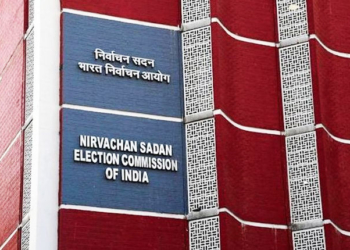New Delhi: Every winter, Delhi sinks beneath a dense, choking haze. The clear October skies turn grey overnight, and once again, headlines scream: Delhi – the world’s pollution capital. Schools shut, life stalls, and the ritual blame game begins — with Diwali firecrackers predictably in the dock.
But, as Akhilesh Mishra, CEO of BlueKraft Digital Foundation, points out, based on extensive data analysis, this is a convenient fiction. The true causes of Delhi’s pollution lie elsewhere — in deeper, structural and long-ignored issues. While fireworks make for easy political and media narratives, Delhi’s smog is shaped by five far more significant factors: road dust, vehicular emissions, biomass burning, diesel generators, and seasonal farm fires, his findings say.
The dust beneath our feet: Delhi’s biggest polluter
On the streets of Delhi, the largest source of particulate matter isn’t what comes out of tailpipes — it’s what lies underfoot. Every broken pavement, unpaved roadside, and leftover pile of construction material becomes a dust reservoir. Passing vehicles churn this dust into the air continuously.
Scientific studies consistently show that road dust contributes around 40 per cent — sometimes even more — to Delhi’s particulate matter pollution, almost double that of vehicular emissions. Mishra’s findings suggest that if Delhi simply ensured that every roadside was paved, planted, or properly managed, particulate pollution could drop dramatically within a year.
The problem extends beyond just air quality. Dust makes walking unpleasant and unhealthy. Commuters exiting metro stations must choose between braving clouds of dust or taking autos and personal vehicles, worsening congestion and emissions.
Dusty markets repel customers, damaging the livelihoods of street vendors and deepening the class divide in public spaces. Dirty, dusty environments quickly turn into garbage dumps, degrading urban life. Fixing road dust, Mishra argues, would not only clean Delhi’s air but also restore dignity to its public spaces.
Vehicles: A secondary villain
Delhi’s vehicle count is staggering, yet their contribution to overall pollution remains secondary compared to dust and external smoke. Cleaner fuels, phasing out old vehicles, promoting electric mobility, and improving congestion management are essential measures — but Mishra’s data-driven analysis makes it clear that fixing vehicles alone cannot solve a crisis dominated by non-vehicular sources.
Biomass and waste burning: The night-time killer
For many of Delhi’s poorer residents, burning wood, crop residue, or garbage is not a choice but a necessity — for warmth in the cold winter nights or for cooking when LPG prices are unaffordable. These small fires collectively emit enormous amounts of fine particulate matter, especially dangerous during temperature inversions that trap pollutants close to the ground overnight. Hospitals see the effects every morning.
Addressing this, Mishra argues, requires empathy-driven governance — not policing, but providing affordable heating, reliable waste collection, and accessible clean energy alternatives for the city’s most vulnerable.
Diesel generators: Pollution at breathing level
Another silent pollutant, according to Mishra, is the diesel generator. These gensets, often used even when the power supply is stable, emit toxic fumes at street level — directly into the air children breathe in schools or shoppers inhale in markets. Delhi has the technology to eliminate this source: solar rooftops, battery storage systems, and cleaner backup power. What’s missing, Mishra emphasises, is urgency and enforcement.
The farm fire tsunami
Every year, for about twenty days, winds carry massive plumes of smoke from crop stubble burning in Punjab and parts of Haryana and western Uttar Pradesh. During this period, stubble smoke can contribute up to 50 pc of Delhi’s pollution levels. These short bursts of fire create a thick, toxic base on which other pollutants accumulate, worsening Delhi’s air for months.
The solutions, Mishra notes, are well known: machinery subsidies, crop residue management systems, residue buy-back policies, and coordinated enforcement. While Haryana and western UP have shown improvement, Punjab must move faster to prevent these annual “smog tsunamis.”
Firecrackers: The convenient villain
Diwali night does lead to short-term spikes in air pollution — but, as Mishra highlights, what matters most is persistence. Firecracker emissions typically disperse within 12 to 24 hours when winds shift. The real catastrophe unfolds later, when road dust, stubble smoke, and biomass burning take over for the next two to three months.
For years, Diwali has been unfairly targeted as the root cause of Delhi’s pollution. Firecrackers have been used for centuries — yet Delhi’s air only began collapsing around 2014–15. The real “new” factor was the shifting of Punjab’s crop-burning season, caused by the 2009 law on delayed paddy transplantation. Instead of confronting this systemic issue, political discourse, Mishra argues, has chosen symbolic politics — villainising a festival instead of addressing the true sources of pollution.
Delhi can breathe again
Delhi’s smog, Mishra concludes, is not a natural inevitability. It is a governance failure — and therefore, entirely solvable.
A practical three-tier plan could revive Delhi’s air within just a few years:
One year – Eliminate road dust by paving pavements, greening verges, enforcing construction norms, and mechanised sweeping.
Two years – End stubble burning through machinery support, crop residue markets, and joint inter-state enforcement.
Three years – Phase out diesel gensets, eliminate biomass burning with affordable clean energy, and modernise transport systems.
Delhi’s pollution is man-made — and so is the solution. What is needed now, as Akhilesh Mishra’s analysis makes clear, is not symbolic outrage or “secular” blame games, but action, accountability, and sustained governance reform — in Delhi and beyond.
(IANS)
















